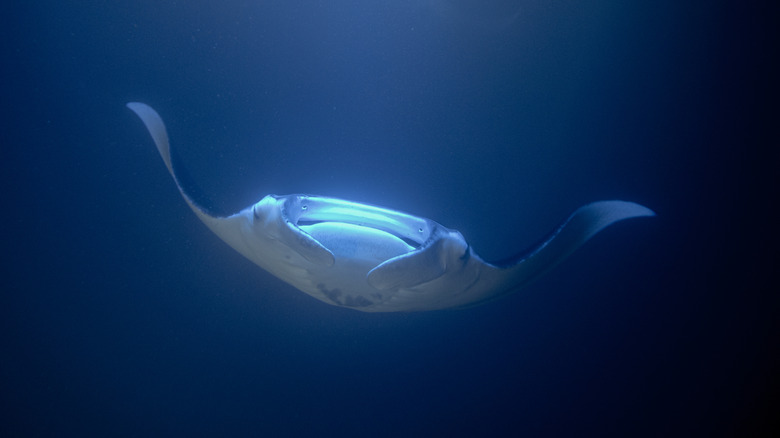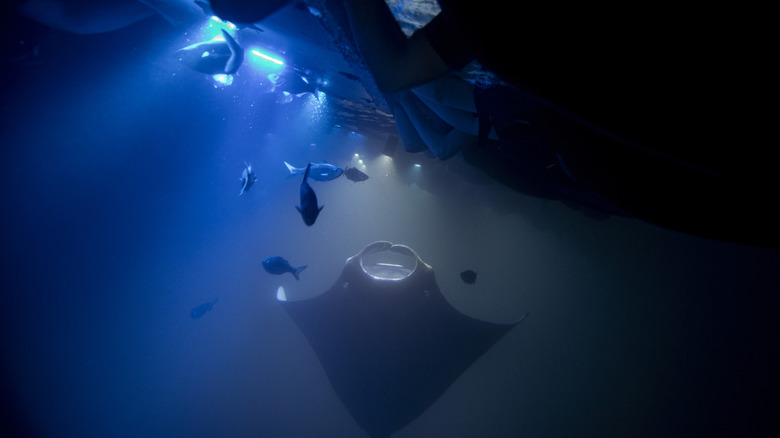Why Night Snorkeling With Manta Rays In Hawaii Is A Beloved But Very Risky Thrill
Hawaii's Big Island is known for things like coffee farms, scenic vistas, and breathtaking volcano Kīlauea. It's also got some of the best snorkeling spots to see turtles, fish, and all sorts of sea life. However, if you're looking for a snorkeling experience to remember forever, you may have considered night snorkeling with manta rays.
The Kona coast is a great place for this, with a few major sites to observe them as they feed after dark on things like plankton, crab larvae, and fish eggs. It's no mystery why you'd want to experience these gentle, majestic creatures up close, but there are risks associated with the activity that you should know about before doing so.
First, these animals feed at night, meaning that you're swimming in a dark ocean. While the idea sounds great, you have to be comfortable with actually doing it in real life. You'll have lights, but you're going to be in water over your head, and that can unnerve some people. Some excursions require you to be able to confidently swim without flotation devices for around 50 yards, and be comfortable with and have experience snorkeling. If you get nervous doing it during the day, you are very likely to be more so at night. You're also required to speak and communicate in English, as you need to be able to listen to instructions and understand them quickly. Remember, you're in the ocean. Storms and other emergencies can happen.
What you have to know before night snorkeling with manta rays
Each company has its own safety rules. For instance, Manta Ray Advocates requires you to be 12 and over, because it's hard for kids to pay attention, and it's dark, meaning it may scare them. However, Manta Ray Night Snorkel Hawaii is okay with kids five and up (with an adult), but they have to have demonstrated a strong swimming ability.
These companies ask you to be in good health, because you're not going to be on land with access to immediate medical help. Things like high blood pressure, heart conditions, back, neck, and shoulder pain, and asthma may mean this isn't the activity for you. Some mobility issues may prevent your participation as well. Snorkeling does have sneaky dangers like cramping up as you swim, dangerous currents, and panic attacks, particularly at night. You should also avoid overeating before the trip to prevent cramps, and skip alcohol completely. However, if you're not a swimmer or snorkeler, or don't feel comfortable doing so at night, some companies, like Manta Adventures, have a non-swimmer option where you can see them from the boat.
Aside from those risks, you have to remember that these are living things and you're in their environment. Manta rays are gentle creatures that don't sting, bite, or poison, and you must not touch them or you could damage the mucus coating on their skin. Always follow the instructions you're given, whether it's avoiding box jellyfish that may show up, where and how to shine your light on the animals, and any other directions you're told. The precautions are worth it to get to see these incredible animals in their natural habitat.

